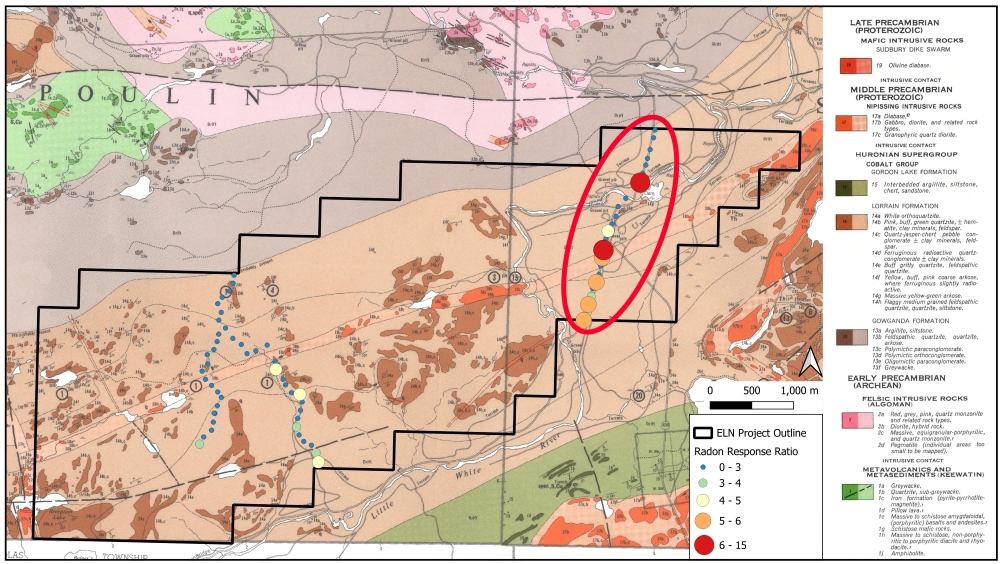Elliot Lake North
EMX’s Elliot Lake North project covers a section of the Lorrain Formation of the Cobalt Group, the 3rd cycle of the Huronian Supergroup. The Lorrain formation is comprised of mature quartzites, red beds and minor amounts of green beds, overlying the Gowganda Formation (diamictite).
Elliot Lake is home to 12 past producing uranium mines, operating for over 40 years beginning in the mid-1950s. Uranium deposits of the Elliot Lake area are thought to be paleoplacer in origin, where detrital Uraninite, derived from Archean-aged granitoids of the Superior Province to the North deposited in paleovalleys under anoxic conditions (early Proterozoic). The presence of oxidized and reduced beds within the upper Huronian stratigraphy suggests that there may be potential for unconformity or roll front style mineralization.
In 2022, EMX geologists conducted a short prospecting trip where the presence of red and green beds was validated, dark grey lenses were also observed within the more reduced, green beds which may be providing organic carbon as a reducing agent for the sandstone. In 2023, EMX geologists conducted a soil radon gas survey to help identify potential areas of interest within the Lorrain formation. This yielded several anomalous sites, possibly indicative of Uranium mineralization not exposed at surface. EMX plans to apply the soil radon method to other parts of the property and conduct more focused prospecting on previously identified anomalous sites.
Maps
Photos

 Click to Enlarge
Click to Enlarge